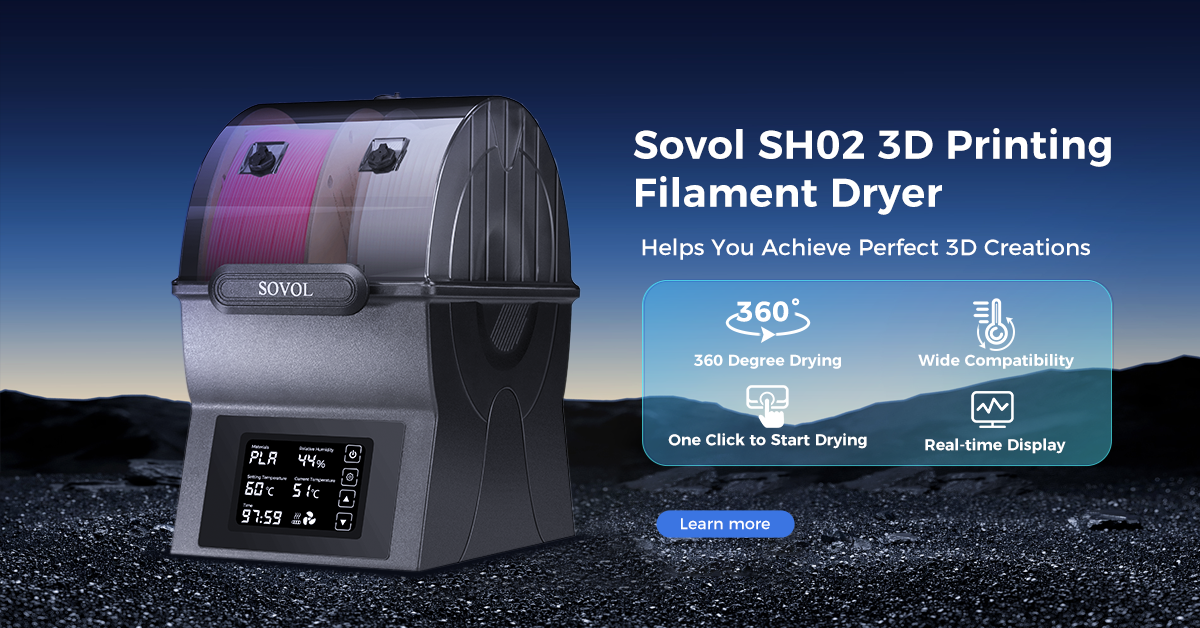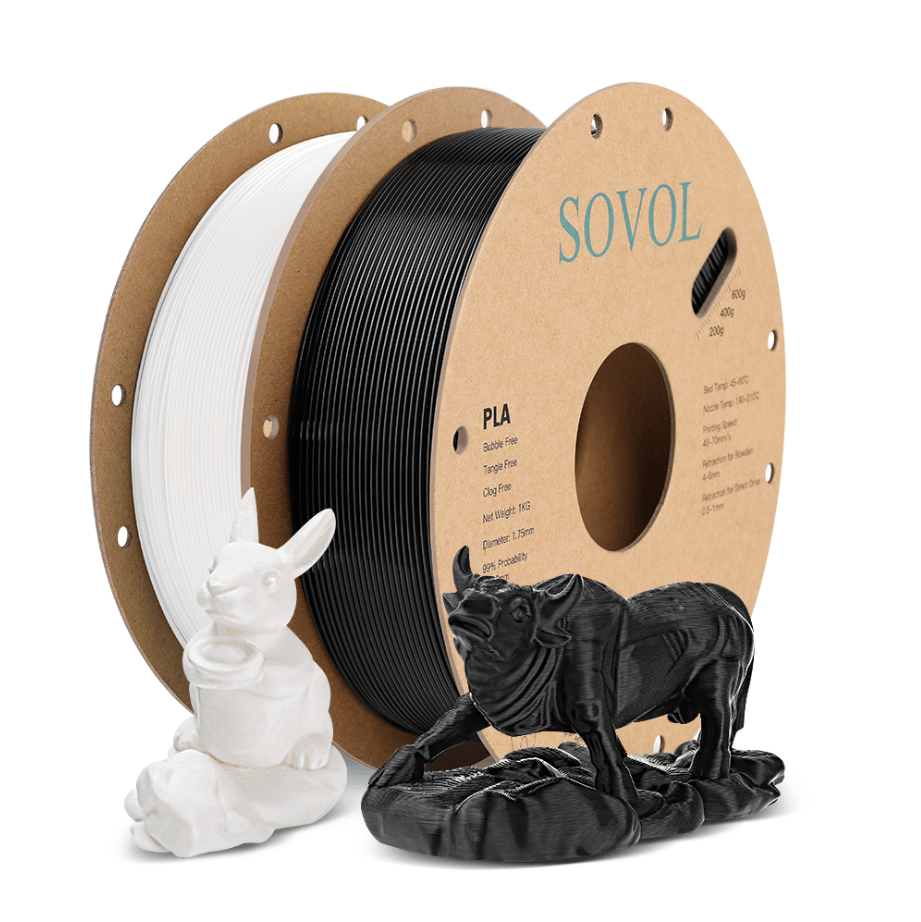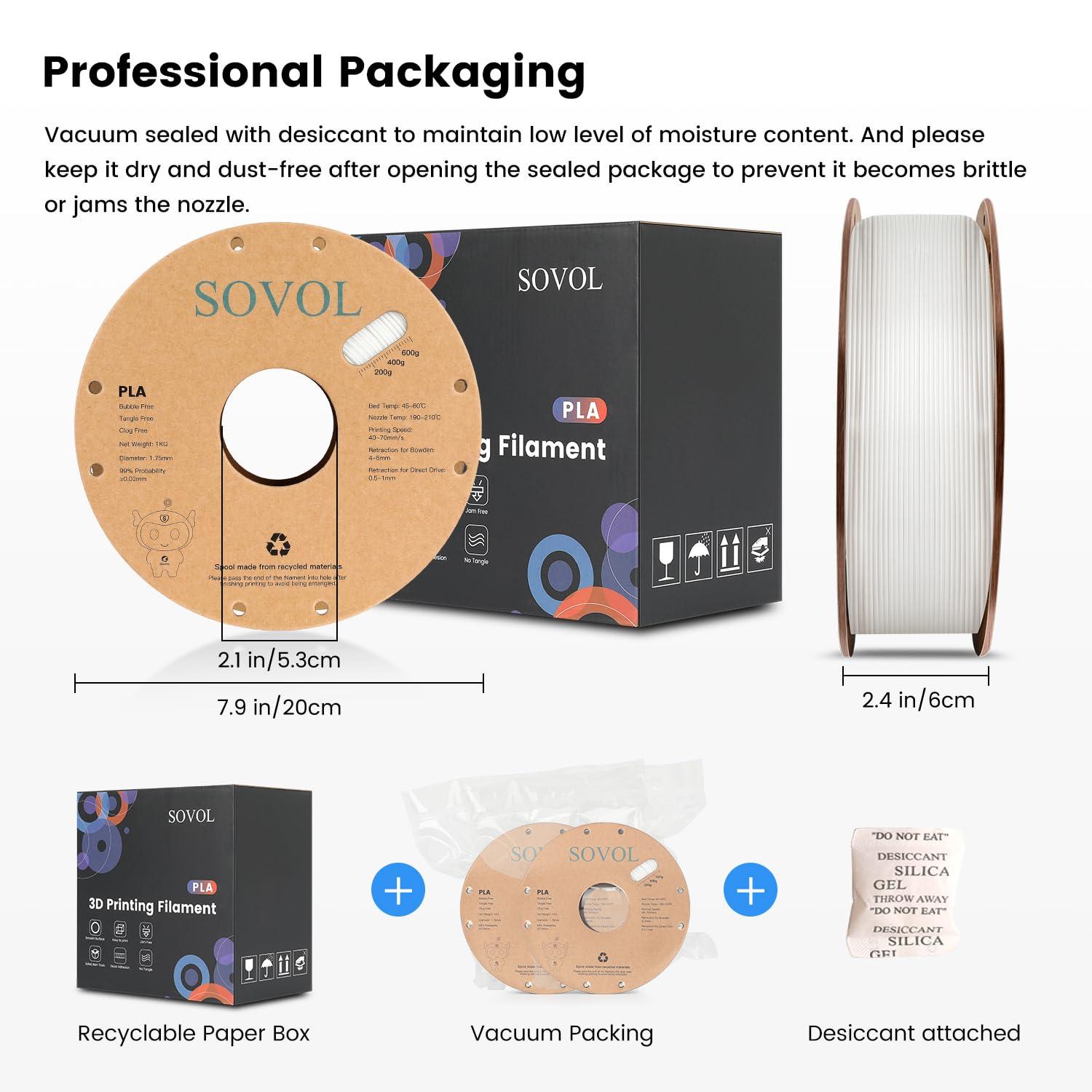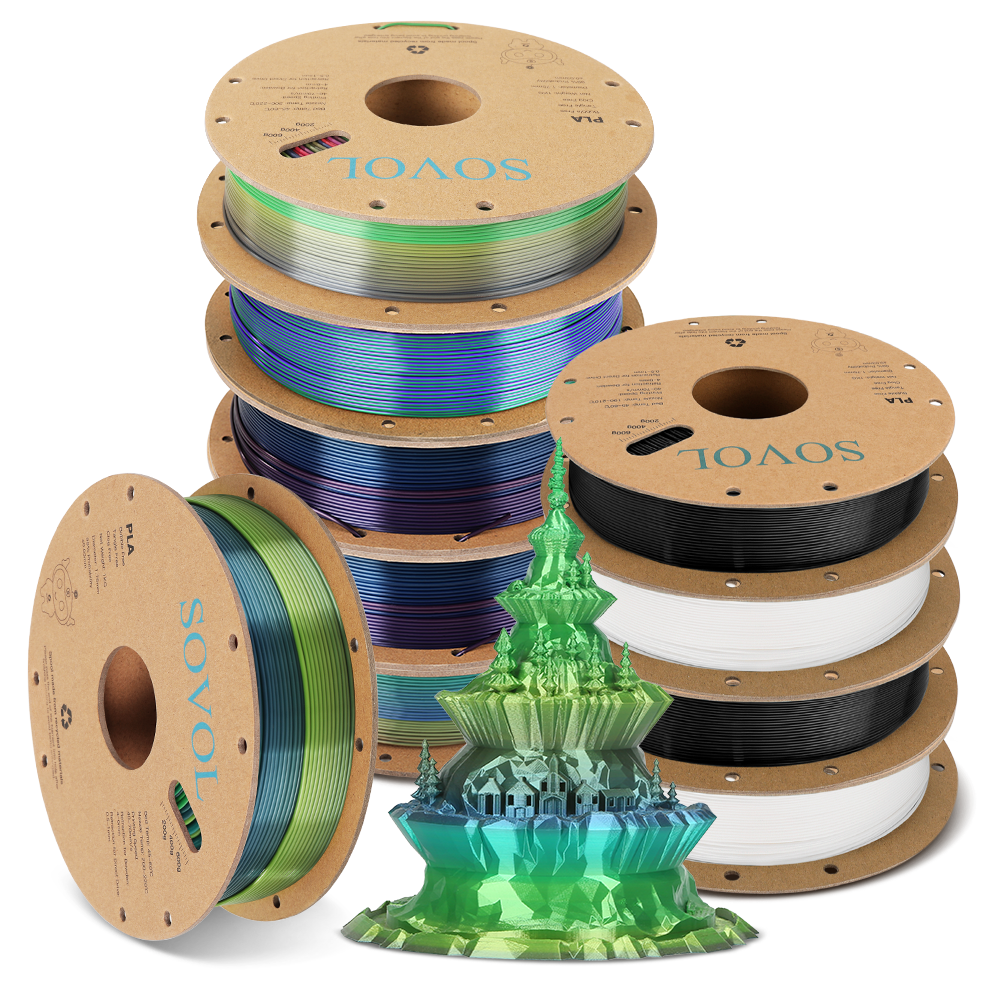About Filamrnts
3D Printing Filament is a thermoplastic material used in FDM 3D printers. It can be roughly classified based on the material into PLA, ABS, TPU, PEGT, Nylon, wood, as well as metals and ceramics. Different types of filaments have different properties, requiring varying print head temperatures, print speeds, and printer specifications. The most common filament diameter is 1.75mm, which is compatible with almost all 3D printer models.
PLA Filament: PLA filament is made from natural plant-based materials such as corn starch and sugarcane. It is eco-friendly, non-toxic, and biodegradable. Its melting point typically ranges from 180℃(356℉) to 200℃(392℉)
The advantages of PLA include easy printing and mild odors during the printing process (similar to the smell of microwave popcorn), making it harmless to humans. It is widely used in the production of everyday items like food containers and toys. Due to its excellent printability and low-temperature printing characteristics, PLA is particularly suitable for home and educational use.
However, PLA has relatively poor mechanical properties and is not resistant to water or chemical corrosion, making it unsuitable for applications that require high strength or resistance to high temperatures.
ABS Filament: ABS is known for its excellent strength and toughness. It retains good color, is easy to mold, and is resistant to high temperatures, making it difficult to break. It is widely used in industries such as automotive, electronics, and manufacturing. However, it has a relatively higher printing difficulty, requiring a high printing temperature, and is prone to warping, so a stable ambient temperature is needed during the printing process. The printing temperature is typically around 220°C (430°F).
ABS does emit an unpleasant odor during printing, and the fumes may contain harmful chemicals, so proper ventilation is necessary. It is not suitable for long-term outdoor use, as UV exposure can cause it to lose color and become brittle over time.
PEGT Filament: PETG combines the advantages of both PLA and ABS, offering excellent mechanical properties and high impact resistance. It is less prone to warping during printing. PETG has no odor, no bubbles, and provides a good gloss finish. It is easier to print than ABS and is suitable for medium and small-scale industrial production, particularly for 3D printing products that require high transparency. The printing temperature typically ranges from 230°C(446℉) to 250°C(482℉).
Compared to PLA, PETG is more flexible and durable, while being easier to print than ABS. It is commonly used for printing industrial parts, lighting fixtures, electronic components, brackets, household tools, and robot parts, among others.























